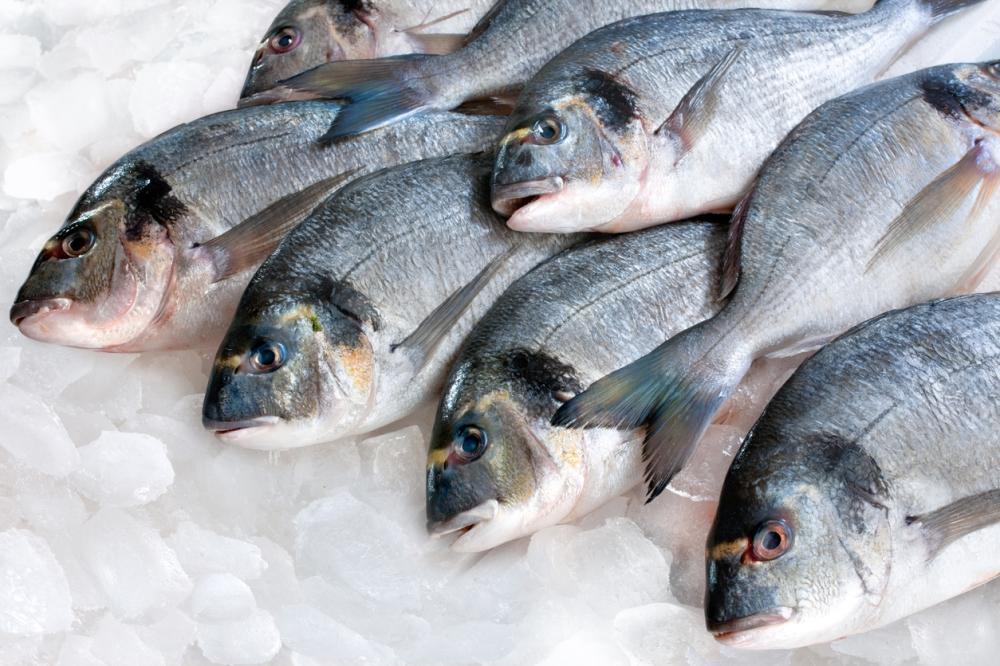Africa-Press – Rwanda. Rwanda imported 70,000 tonnes of frozen fish (excluding fillets) worth over $92 million (more than Rwf132 billion) in 2024, representing a 31.4 per cent increase in value terms, from $70 million in the previous year, according to the 2024 Trade and Industry Performance report by the Ministry of Trade and Industry.
The rise in imports shows the gap between demand and local supply.
Solange Uwituze, the Deputy Director General in charge of Animal Resources Development at Rwanda Agriculture and Animal Resources Development Board (RAB), told The New Times that the demand for fish is rapidly growing, both domestically and within the regional market.
However, Rwanda’s local fish production, currently estimated at about 52,000 tonnes per year, is not sufficient to meet this increasing demand, she indicated.
“This shortfall has necessitated higher imports to fill the supply gap,” Uwituze said.
What is being done to increase domestic fish production and reduce imports?
Rwanda has set a target to increase aquaculture-based fish production to 80,000 tonnes by 2035, Uwituze said, indicating that to achieve this goal, several strategic interventions are being implemented.
They include restocking of fish ponds, lakes, and irrigation schemes with improved fish species, capacity building for fish farmers and fishers on best practices and sound aquaculture management, mobilising and facilitating new investments in fish farming and related activities, and developing, enforcing, and implementing aquaculture-related policies and guidelines.
They also feature improving the availability and accessibility of quality inputs such as fish fingerlings and feed, enhancing biosecurity measures in aquaculture systems, conducting genetic improvement programs for locally farmed fish species, and strengthening monitoring, control, and surveillance systems to combat illegal, unreported, and unregulated (IUU) fishing.
Major fish farms’ contribution to domestic fish supply
Key operational fish farms and aquaculture projects include Kivu Choice in Nyamasheke, Fine Fish Farms in Rwamagana and Rubavu, Kivu Tilapia and Aquasante in Rusizi, FreFish Ltd, Gishanda Fish Farm, Uwituze indicated, adding that several smaller farms around Lakes Muhazi, Kivu, Burera, and Ruhondo.
“Collectively, these farms contribute approximately 8,000 tonnes to the country’s annual fish production,” Uwituze said.
She said that fish species currently produced in Rwanda include Tilapia, African catfish (Clarias gariepinus), and common Carp, Limnothrissa miodon (Isambaza), amd Haplochromis.
“While the current variety of species in terms of quality and diversity is going through improvement efforts, the production volume remains insufficient to fully satisfy consumer demand. To address this, the government, together with private sector partners, is actively working to increase investment and expand aquaculture projects across the country,” Uwituze said.
Benjamin Bizima, Commercial Director at Kivu Choice, a local fish firm, told The New Times that the company is working to further contribute to reducing Rwanda’s growing fish import bill by boosting local production.
“We are aware of the increase in importation of fish to Rwanda, and we, as Kivu Choice, we’ve really been working hard to tackle that challenge that is rising,” Bizima said.
Kivu Choice plans to expand its production capacity to 40,000 tonnes by 2029, up from around 3,000 tonnes in 2024, implying a more than 10-fold increase in five years.
“Effective next year, which is 2026, there is already a significant [projected] increase where we expect our production capacity to almost triple from where we are today,” he said, adding that the company expects to produce over 7,000 tonnes in 2025.
“We really want to contribute massively to the fish consumption in Rwanda and provide highest quality fish on the market,” he added, pointing out that the goal is to meet up to 50 per cent of national fish consumption.
“With the projected plan to contribute 50 per cent of national fish production, that’s massive, that is cutting that cost by 50 per cent,” he said, referring to supporting efforts to reduce the country’s import bill.
On investment, Bizima said, the firm has already put a lot of investment in place, indicating that the cycle of growing our fish is still close to nine to ten months.
“We are already stocking close to 10 million fingerlings every month. That’s among the largest in the whole of East Africa and beyond.”
Kivu Choice focuses on Tilapia, which Bizima said is in high demand locally and abroad, adding that it supplies fresh fish to the market – on the same day of harvest.
On affordability, Bizima said Kivu Choice offers accessible prices. “We provide the most affordable fish to Rwandans,” he said, stating that a kilo of fish sells at about Rwf3,000.
Themistocles Munyangeyo, founder of Fine Fish Ltd which carries out cage fish farming on Lake Kivu in Western Province and Lake Muhazi in Eastern Province, told The New Times that the surge in imports reflects the fact that fish sector in Rwanda started having tangible investments about five years ago, but pointed out that more people are now investing in the sector with real commitment.
He said that his firm’s production currently stands at 140 tonnes monthly – from 90 tonnes as of June 2024 – with expectations to increase further in the coming months as it has imported fish cages with three times the capacity of the current ones.
Regarding financing and risk management, Munyangeyo said that there are positive developments with fish now being eligible for national insurance coverage, and financial institutions getting interested in funding fish projects.
“Access to financing has improved. Now, if you have a viable project, banks are willing to fund it. That’s commendable progress,” he said.
One of the constraints in fish production is the high cost of feed, which is associated with imports, Munyangeyo said.
To address the issue, he pointed out that local fish feed factories are emerging, citing his farm that set up a factory with a capacity to produce 500 tonnes of feed per month to supply his farms and those of other farmers.
However, he said that the feed production falls short of the demand and that he plans to increase this capacity by six times to 3,000 tonnes of feed monthly, with a new factory set to begin construction in 2026 and be completed by the end of the same year.
According to Munyangeyo, the price of fish feed ranges between Rwf1,100 and Rwf1,700 per kilo, depending on protein content. Feed for fingerlings is the most expensive at Rwf1,700 per kilo, while feed for adult fish is the cheapest.
As the sector works to scale up, Munyangeyo is optimistic that local production will significantly reduce Rwanda’s reliance on fish imports under the second phase of the National Strategy for Transformation (NST2), which runs from 2024/25 to 2028/29.
For More News And Analysis About Rwanda Follow Africa-Press






